


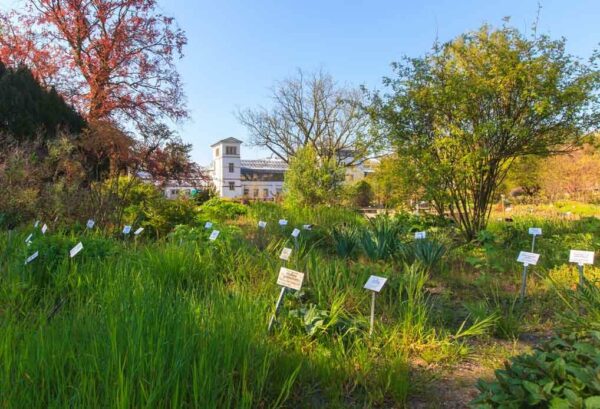
Researchers at Leipzig University (UL) and the German Centre for Integrative Biodiversity Research (iDiv) have compiled the world’s most comprehensive list of known plant species. It contains 1,315,562 names of vascular plants, thus extending the number of recognised plant species and subspecies by some 70,000 – equivalent to about 20%. The researchers have also succeeded in clarifying 181,000 hitherto unclear species names. The data set has now been published in Scientific Data. This marks the culmination of more than ten years of intensive research work and could help to make Leipzig a leading international centre of plant biodiversity research.
Leipzig could mean for the future of plant taxonomy what Greenwich meant for world time until 1972: it could become the reference city for correct scientific plant names. In an outstanding feat of research, the curator of the Botanical Garden of Leipzig University, Dr Martin Freiberg, and colleagues from iDiv and UL have compiled what is now the largest and most complete list of scientific names of all known plant species in the world. The Leipzig Catalogue of Vascular Plants (LCVP) enormously updates and expands existing knowledge on the naming of plant species, and could replace The Plant List (TPL) – a catalogue created by the Royal Botanic Gardens, Kew in London which until now has been the most important reference source for plant researchers.
“In my daily work at the Botanical Garden, I regularly come across species names that are not clear, where existing reference lists have gaps,” said Freiberg. “This always means additional research, which keeps you from doing your actual work and above all limits the reliability of research findings. I wanted to eliminate this obstacle as well as possible.”
World’s most comprehensive and reliable catalogue of plant names
With 1,315,562 scientific names, the LCVP is the largest of its kind in the world describing vascular plants. Freiberg compiled information from accessible relevant databases, harmonized it and standardised the names listed according to the best possible criteria. On the basis of 4500 other studies, he investigated further discrepancies such as different spellings and synonyms. He also added thousands of new species to the existing lists – species identified in recent years, mainly thanks to rapid advances in molecular genetic analysis techniques.
The LCVP now comprises 351,180 vascular plant species and 6160 natural hybrids across 13,460 genera, 564 families and 84 orders. It also lists all synonyms and provides further taxonomic details. This means that it contains over 70,000 more species and subspecies than the most important reference work to date, TPL. The latter has not been updated since 2013, making it an increasingly outdated tool for use in research, according to Freiberg.
“The catalogue will help considerably in ensuring that researchers all over the world refer to the same species when they use a name,” says Freiberg. Originally, he had intended his data set for internal use in Leipzig. “But then many colleagues from other botanical gardens in Germany urged me to make the work available to everyone.”
LCVP vastly expands global knowledge of plant diversity
“Almost every field in plant research depends on reliably naming species,” says Dr Marten Winter of iDiv, adding: “Modern science often means combining data sets from different sources. We need to know exactly which species people refer to, so as not to compare apples and oranges or to erroneously lump different species.” Using the LCVP as a reference will now offer researchers a much higher degree of certainty and reduce confusion. And this will also increase the reliability of research results, adds Winter.
“Working alone, Martin Freiberg has achieved something truly incredible here,” says the director of the Botanical Garden and co-author Prof Christian Wirth (UL, iDiv). “This work has been a mammoth task, and with the LCVP he has rendered an invaluable service to plant research worldwide. I am also pleased that our colleagues from iDiv, with their expertise in biodiversity informatics, were able to make a significant contribution to this work.”
Read the paper: Scientific Data
Article source: German Centre for Integrative Biodiversity Research (iDiv)
Image credit: Leipzig is host to the oldest botanical garden in Germany. On an area of only three hectares, around 6500 of the 350,000 plant species worldwide grow here. Credit: Swen Reichhold
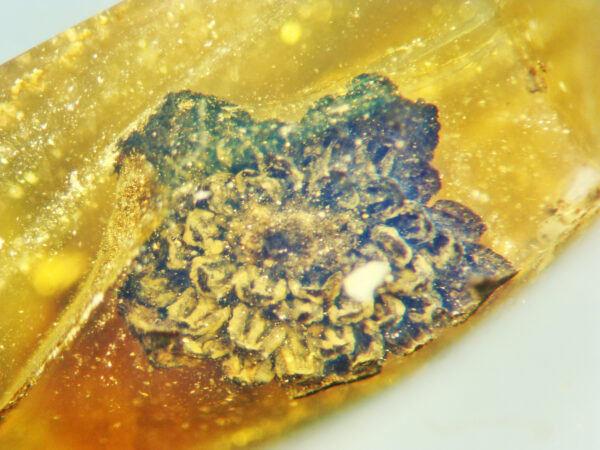
Oregon State University researchers have identified a spectacular new genus and species of flower from the mid-Cretaceous period, a male specimen whose sunburst-like reach for the heavens was frozen in time by Burmese amber.
“This isn’t quite a Christmas flower but it is a beauty, especially considering it was part of a forest that existed 100 million years ago,” said George Poinar Jr., professor emeritus in the OSU College of Science.
Findings were published in the Journal of the Botanical Research Institute of Texas.
“The male flower is tiny, about 2 millimeters across, but it has some 50 stamens arranged like a spiral, with anthers pointing toward the sky,” said Poinar, an international expert in using plant and animal life forms preserved in amber to learn more about the biology and ecology of the distant past.
A stamen consists of an anther – the pollen-producing head – and a filament, the stalk that connects the anther to the flower.
“Despite being so small, the detail still remaining is amazing,” Poinar said. “Our specimen was probably part of a cluster on the plant that contained many similar flowers, some possibly female.”
The new discovery has an egg-shaped, hollow floral cup – the part of the flower from which the stamens emanate; an outer layer consisting of six petal-like components known as tepals; and two-chamber anthers, with pollen sacs that split open via laterally hinged valves.
Poinar and collaborators at OSU and the U.S. Department of Agriculture named the new flower Valviloculus pleristaminis. Valva is the Latin term for the leaf on a folding door, loculus means compartment, plerus refers to many, and staminis reflects the flower’s dozens of male sex organs.
The flower became encased in amber on the ancient supercontinent of Gondwana and rafted on a continental plate some 4,000 miles across the ocean from Australia to Southeast Asia, Poinar said.
Geologists have been debating just when this chunk of land – known as the West Burma Block – broke away from Gondwana. Some believe it was 200 million years ago; others claim it was more like 500 million years ago.
Numerous angiosperm flowers have been discovered in Burmese amber, the majority of which have been described by Poinar and a colleague at Oregon State, Kenton Chambers, who also collaborated on this research.
Angiosperms are vascular plants with stems, roots and leaves, with eggs that are fertilized and develop inside the flower.
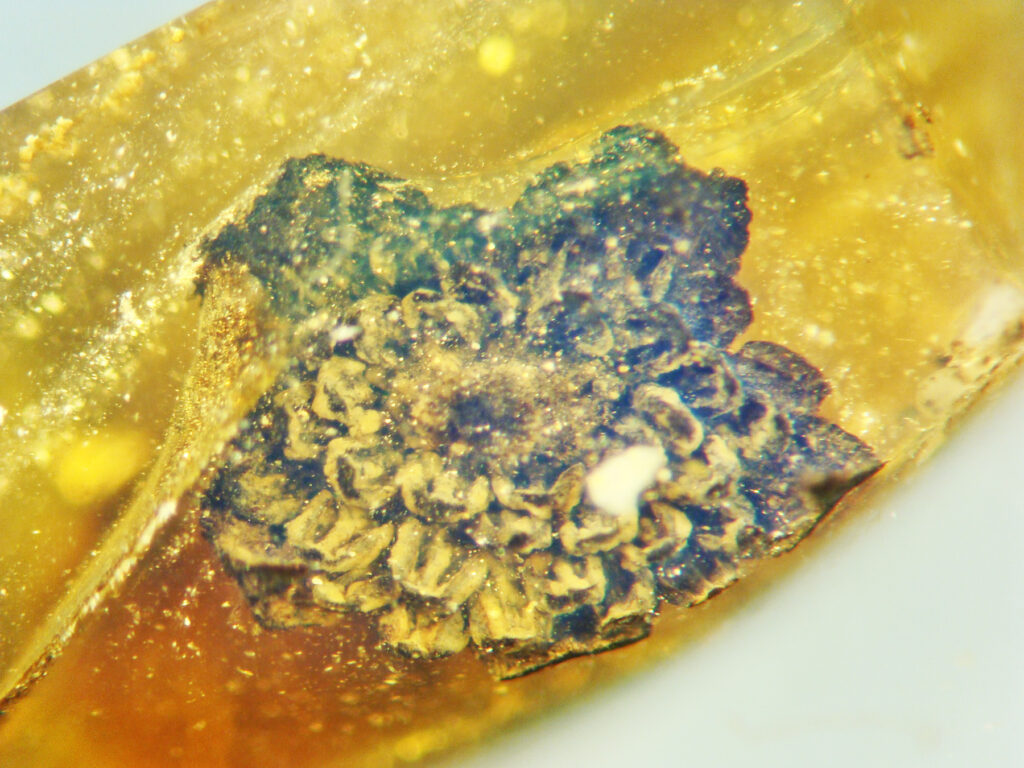
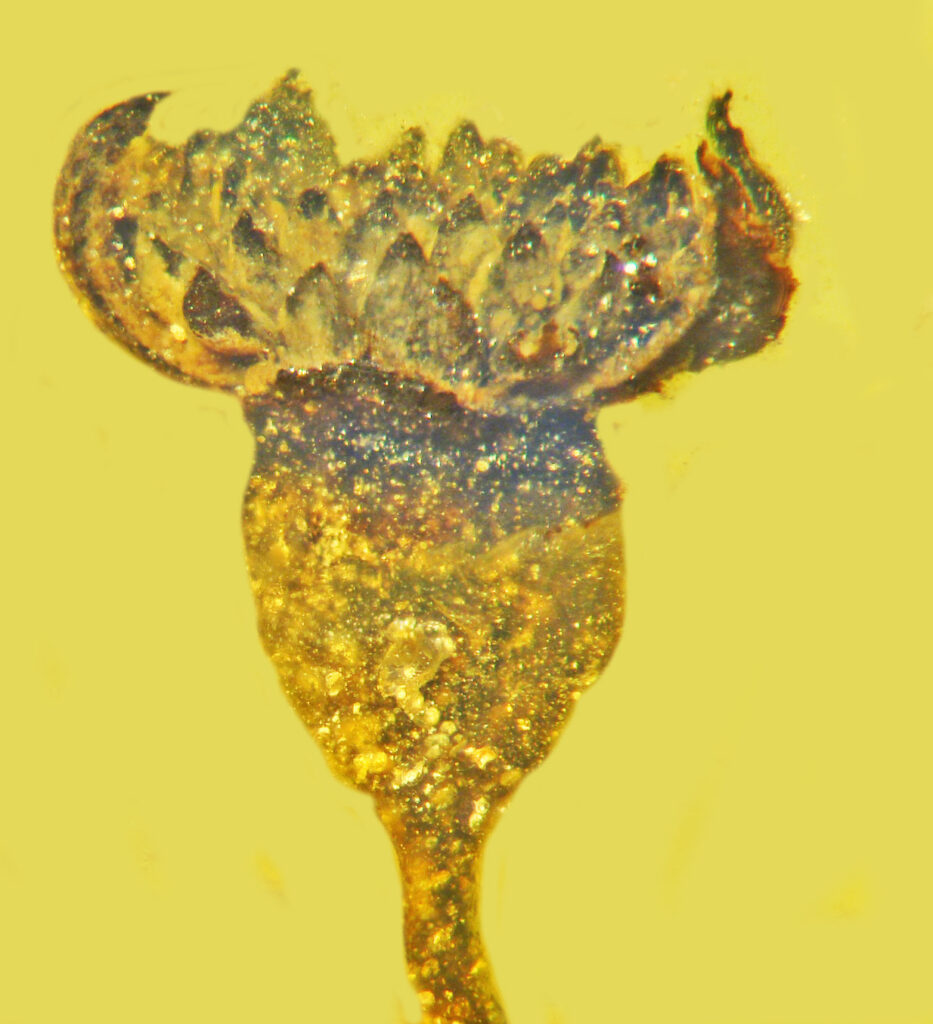
Since angiosperms only evolved and diversified about 100 million years ago, the West Burma Block could not have broken off from Gondwana before then, Poinar said, which is much later than dates that have been suggested by geologists.
Joining Poinar and Chambers, a botany and plant pathology researcher in the OSU College of Agricultural Sciences, on the paper were Oregon State’s Urszula Iwaniec and the USDA’s Fernando Vega. Iwaniec is a researcher in the Skeletal Biology Laboratory in the College of Public Health and Human Sciences and Vega works in the Sustainable Perennial Crops Laboratory in Beltsville, Maryland.
Read the paper: Journal of the Botanical Research Institute of Texas
Article source: Oregon State University
Author: Steve Lundeberg
Image credit: Oregon State University
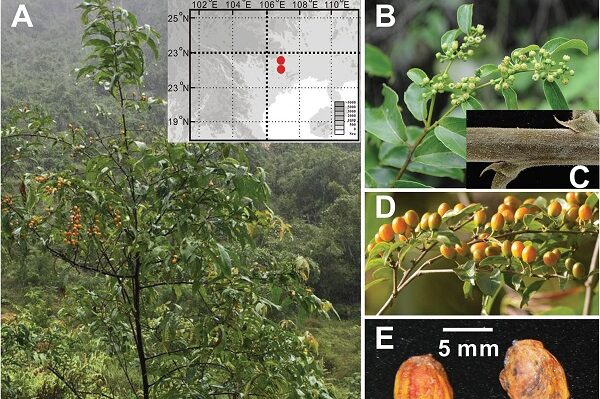
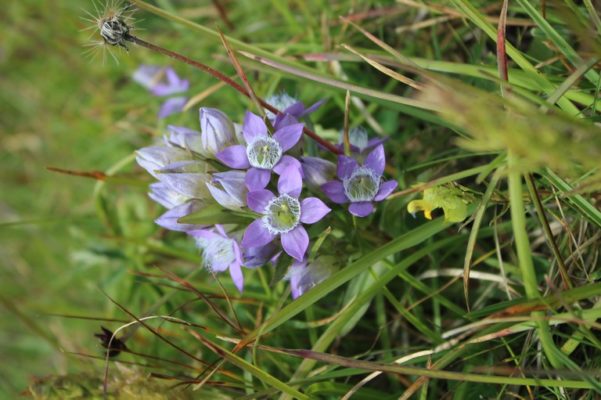
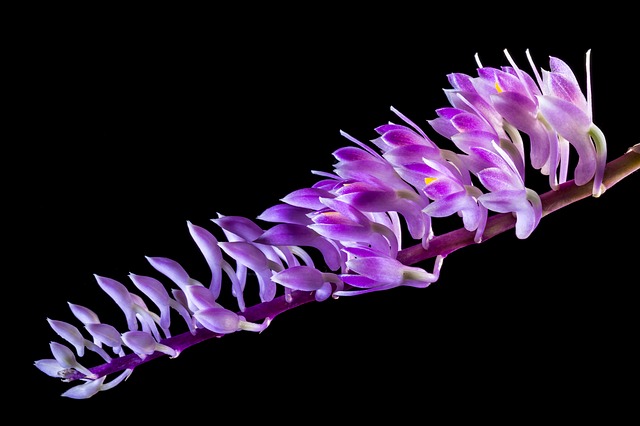

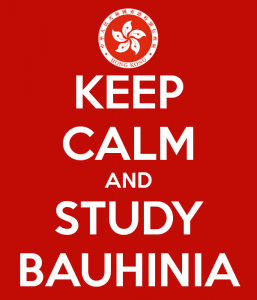
Bahunia is the national flower of Hong Kong, GigaScience is launching a crowdfunding campaign to learn more about the biological and genetic history of this flower.
By Scott Edmunds, Executive Editor, GigaScience Journal
‘Big Data’ is becoming increasingly ubiquitous in our lives, and we at GigaScience are big fans of approaches democratizing its utility through crowdfunding and crowdsourcing. With much mistrust and fear of genetic technologies there is also a huge need to educate and throw light on “what goes on under the hood” during the process of genomic sequencing and research.
After helping promote community genome and microbiome projects such as the Puerto Rican “peoples parrot”, Azolla Genome, Kittybiome, and the community cactus (previously highlighted in the Global Plant Council Blog), the team at GigaScience has finally decided to launch our own.
Inspired by our Hong Kong home, this month we’ve launched an exciting new crowdfunding project to help learn about the enigmatic biological and genetic history of the beautiful symbol of Hong Kong: the Bauhinia flower.
Hong Kong’s emblem is the beautiful flower of the Hong Kong Orchid Tree Bauhinia x blakeana: it is mysterious in origin, and lovely along the roadside and in any garden. Being used as a food crop in India and Nepal, Bauhinias are actually a legume rather than an orchid, and while a transcriptome has been sequenced as part of the 1KP project (Bauhinia tomentosa) no species of the genus has yet had its genome sequenced.
A Brief History of Bauhinia blakeana
It was first discovered in the 1880’s by the famous horticulturist Father Jean-Marie Delavey
growing on a remote mountainside in Hong Kong, but how it got there is a mystery – especially since it is sterile. The missionary collector subsequently propagated it in the grounds of the nearby Pokfulam Sanatorium, and from there it was introduced to the Hong Kong Botanic Gardens and across the world. Originally described as a new species in 1908, it was subsequently named after the Hong Kong governor Sir Henry Blake, who had a strong interest in botany. We have an opportunity to get a glimpse into this fascinating history by carrying out a crowdfunding project to determine its entire genetic make up.
In addition, it’s a project we are trying to get everyone involved in: from gardeners to botanists, historians to photographers, university researchers to school children – really, anyone interested in being a part of Hong Kong’s First Emblematic Genome Project and understanding the biological secrets of this unique flower.
Plant Genomics for the Masses
Teaming up with BGI Hong Kong and scientists at the Chinese University of Hong Kong, this new crowdfunding project will use one of the best techniques to help uncover the secrets of any living being: genomic sequencing. While the cost of sequencing has crashed a million fold since the human genome project, plant genomes are still challenging. While Bauhinia have a relatively small genome (0.6C), being a hybrid means it will be very challenging to assemble using current short-read technologies. To get around this we are having to sequence the two likely parents first, pushing the reagent costs that we need to cover through crowdfunding up to about $10,000. Studies using individual genetic markers have shown that the species is likely a hybrid of two local species, Bauhinia variegata and Bauhinia purpurea, but this has yet to be confirmed at a genomic scale.
Genome sequencing is also one of the key technologies defining the 21st century, and a field in which Hong Kong has made major advances (for example in BGI Hong Kong’s giant sequencing capacity, as well circulating DNA diagnostics), though more effort is needed to engage and inform the general public.
Through sequencing the genome of our emblem to better understand where it came from; this will help to train local students to assemble and analyze the data – crucial skills needed for this field to advance; and engage and educate the public through local pride. Outreach and awareness-building is key, and we have already managed to get plant genomics and Bauhinia onto the front cover of the SCMP Sunday Magazine and on Hong Kong radio.
You can also access the YouKu version of the above video here.
Get involved!
The project seeks a variety of things from the community: at its most basic level, help in the form of donations can be provided at the project’s website. As a community project no contribution is too small, so please contribute via the crowdfunding page.
Furthermore, we’ll be carrying out community engagement and citizen science in the form of Bauhinia Watch, where people in the community can inform researchers about sightings of the flower and its relatives, and look for the hypothesized very rare individual plants that may produce seeds. Photographs along with location information are especially desired, and can be shared with the global community on social media (use the #BauhiniaWatch hashtag).
Also, getting involved in educating the community is key. The project’s website, in addition to explaining the science behind the project, provides information for identifying the different Bauhinia species, which can be fun for curiosity driven individuals of any age. Now is the time! Bauhinia blakeana is in peak flowering season in Hong Kong from November to March.
Moreover, this is a great opportunity for creating school projects, to learn about botany, evolution, the latest scientific technologies, and to participate in the research or carry out fundraising to join the Bauhinia community.
This will be the first Hong Kong genome project: funded by the public; sequenced in Hong Kong; assembled and analyzed by local students; and directly shared with the community.
Being Open Data advocates, all data produced will immediately be shared with our GigaDB platform, and all methods, analyses and teaching materials will be captured and made open to empower others to carry out similar efforts around the world.
Bauhinia Genome welcomes contributions and interest from across the globe, hoping this serves as a model to inspire and inform other national genome projects, and aid the development of crucial genomic literacy and skills across the globe; inspiring and training a new generation of scientists to use these tools to tackle the biggest threats to mankind: climate change, disease and food security. We have already collected enough money to fund the transcriptome, and the next goal is to get enough funds to start sequencing the genomes of the family members. To enable us to do this support us through our crowdfunding site, like us on Facebook or twitter, and help spread the word.
For more information and to support the project visit the website and crowdfunding page. follow us on Twitter @BauhiniaGenome, or on Facebook, and include the hashtag #BauhiniaWatch for any news or pictures you’d like to share on social media.